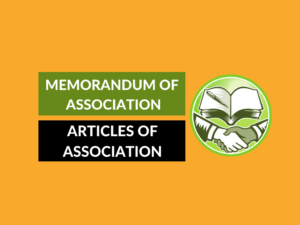Engaging Introduction:
The Memorandum of Association and Article of Association are two crucial documents that form the foundation of any company or organization. Understanding the differences between these documents is essential for anyone involved in corporate governance, legal affairs, or seeking to establish their own company. In this comprehensive article, we will delve into the definitions, examples, uses, and ultimately, highlight the key differences between Memorandum of Association and Article of Association.
What is/are Memorandum of Association?
The Memorandum of Association, often referred to as MOA, is a legal document that outlines the fundamental objectives and powers of a company. It serves as the foundation upon which a company is built and provides information regarding the company’s name, registered office, objectives, and association details.
Examples of Memorandum of Association:
Let’s consider some examples of Memorandum of Association:
- A technology company may mention its aim to develop innovative software solutions.
- A non-profit organization may outline its objectives to promote education and provide healthcare facilities.
Uses of Memorandum of Association:
The Memorandum of Association serves various purposes, such as:
- It defines the scope and powers of the company.
- It sets out the company’s objectives and activities.
- It establishes the liability of members or shareholders.
- It acts as an external document when dealing with third parties like banks, investors, and suppliers.
What is/are Article of Association?
The Article of Association, commonly referred to as AOA, is another important legal document that contains rules and regulations for the internal management and operation of a company. It details the rights, duties, and powers of the company’s directors, officers, and shareholders.
Examples of Article of Association:
Here are some examples of provisions that can be found in the Article of Association:
- The process for conducting board meetings and shareholders’ meetings.
- The appointment, powers, and responsibilities of directors.
- The rights and privileges of shareholders.
- The procedure for issuing new shares and transfer of existing shares.
Uses of Article of Association:
The Article of Association serves several purposes, including:
- It regulates the internal affairs and management of the company.
- It outlines the responsibilities and powers of directors and shareholders.
- It establishes the procedures for decision-making, voting rights, and share transfers.
- It provides clarity on the rights and privileges of various stakeholders within the organization.
Differences Table:
| Difference Area | Memorandum of Association | Article of Association |
|---|---|---|
| Nature | Defines the company’s objectives, powers, and scope | Contains rules and regulations for internal management and operation |
| Contents | Includes company name, registered office, objectives, and association details | Specifies the process for conducting meetings, appointment and responsibilities of directors, and rights of shareholders |
| Scope | Permanent document | Alterable document |
| Alteration | Requires special resolutions and approval from the Registrar of Companies | Can be changed through ordinary resolutions without Registrar’s approval |
| Public Access | Accessible to the public for inspection | Generally not accessible to the public |
| Binding Nature | Parties inside and outside the company | Only the company and its members |
| Legal Standing | Carries legal significance and can be enforced in a court of law | Has legal standing and can be enforced, but it supplements the Memorandum of Association |
| Effect on Company | The company cannot act beyond the scope defined in the Memorandum | Operations and management can be governed by AOA |
| Relations with Outsiders | Outsiders are bound by the provisions of the Memorandum when dealing with the company | The company’s dealings with outsiders are not directly governed by the AOA |
| Limitation on Powers | Acts of the company beyond the power stated in the Memorandum are considered ultra vires | Acts of the company beyond the power stated in the AOA may still be considered valid unless challenged |
Conclusion:
In summary, the Memorandum of Association and Article of Association are two distinct legal documents that serve different purposes within a company or organization. While the MOA sets out the company’s objectives, powers, and scope, the AOA focuses on internal management and operational rules. Each document has its unique characteristics, legal standing, and impact on the company’s operations and relationships with outsiders.
People Also Ask:
- What is the main purpose of the Memorandum of Association?
The main purpose of the Memorandum of Association is to define the company’s objectives, powers, and scope. - Can the Article of Association be easily amended?
Yes, the Article of Association can be changed through ordinary resolutions without the approval of the Registrar of Companies. - Is the Memorandum of Association legally binding?
Yes, the Memorandum of Association carries legal significance and can be enforced in a court of law. - What happens if the company acts beyond the powers stated in the Memorandum of Association?
Acts of the company beyond the power stated in the Memorandum of Association are considered ultra vires. - Are outsiders bound by the provisions stated in the Article of Association?
No, the company’s dealings with outsiders are not directly governed by the provisions of the Article of Association.


